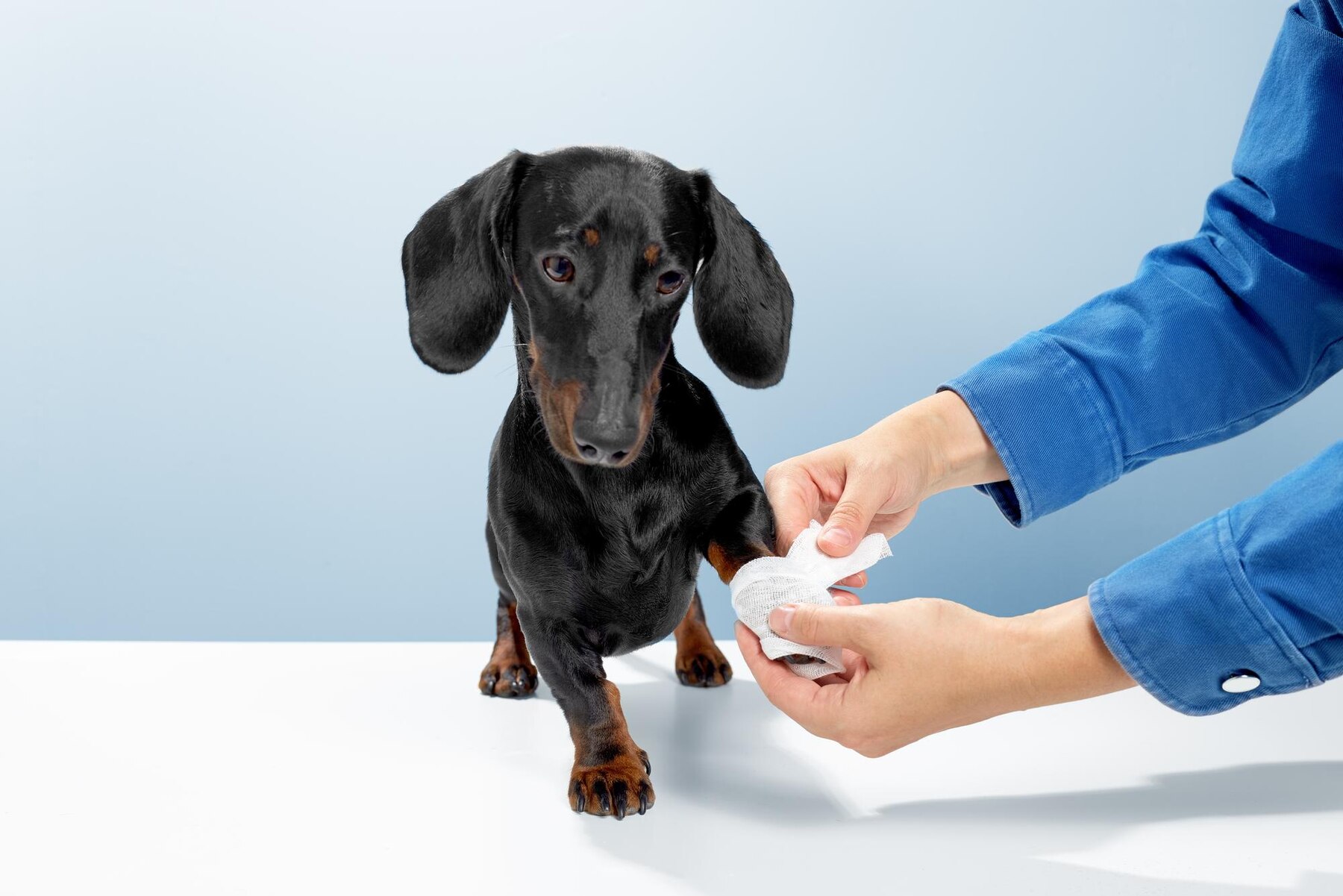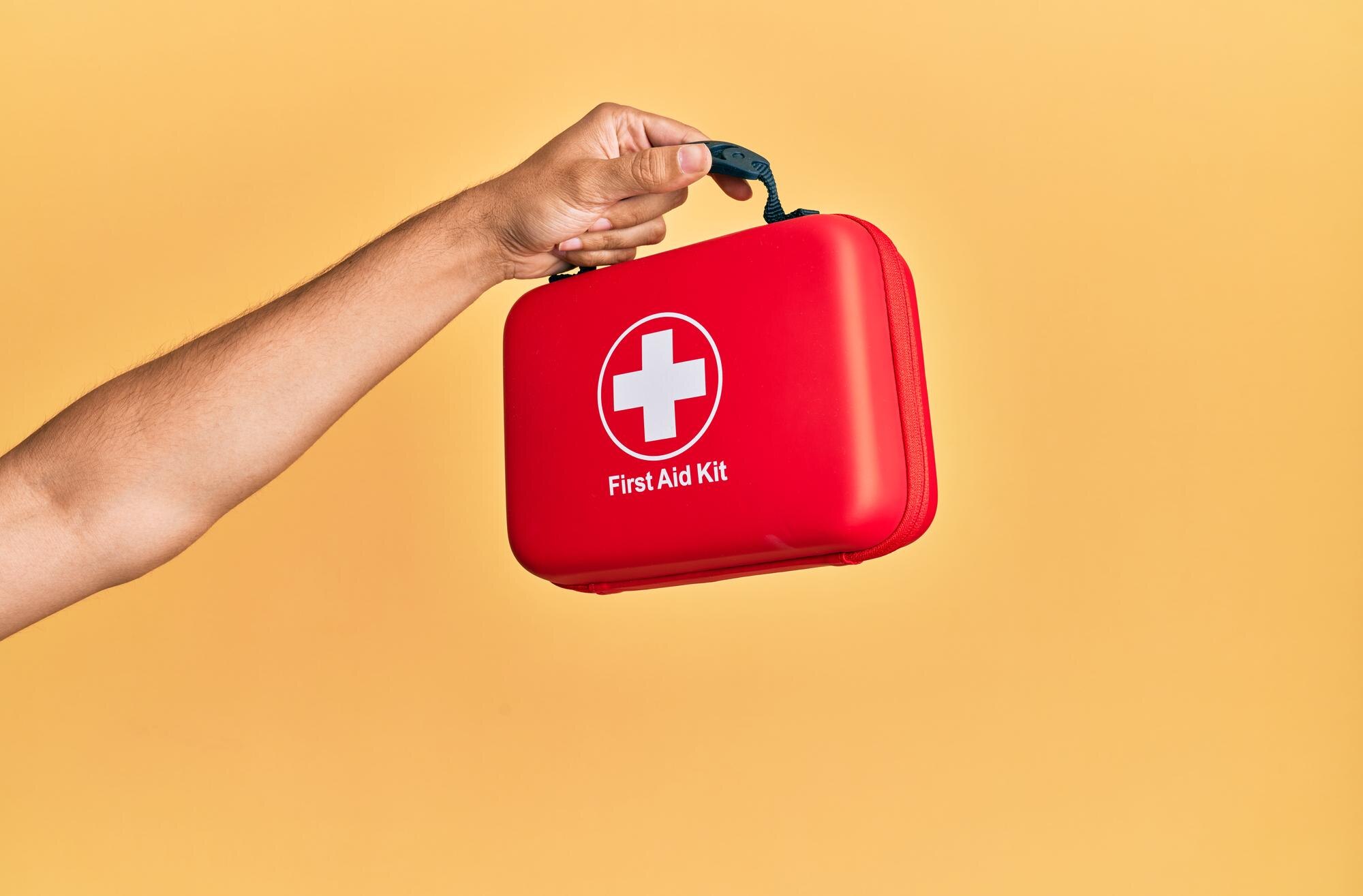How to treat your dog’s wounds at home? Dog First-Aid Kit Essentials
No wonder it feels good to see your pup playing, dancing, and having fun in its own ways. However, during such activities, accidents happen. And that’s quite common. Even when a human child plays, he/she might get into some things that can turn into injuries. Our dogs are like human toddlers and they are more rowdy than any other animals. Hence, there is a high chance that they may end up having a minor wound, cut or abrasion. So, what to do when it happens?
First, don’t panic. Instead of rushing to the vet or pet emergency care every time, you should treat cuts, minor wounds, etc. even at home. You should understand or be able to recognise when to take your dog to the veterinary or when not. Being a responsible dog parent, you should know how to treat your dog’s wounds at home. You should know how to clean your dog’s minor cuts or bruises at home.
In this post, we have shared everything you need to know including when to take your dog to the vet, what type of pet first aid essentials you should have at home and how to treat minor wounds. Let’s dig into the details one by one:

When should you take your dog to the Vet?
Accidents or injuries can happen in any form. There are several types of wounds or injuries that should be treated by the veterinarian only. Injuries such as:
- A bite wound, deep laceration or any injury that fully penetrates the skin
- Any injury that covers the sensitive part of your dog or involves a large portion of the body
- Any wound that has pus or liquid and shows red or puffy marks
Whether a wound is small or big, it should be dealt with proper care and attention. A little negligence can make your dog suffer. Also, if you wait to get healed on its own, the infection can spread and can make the case complicated. We suggest if you even get confused about what to do with the injury or the severity of your dog’s wound, connect with the vet immediately.
What are the dog first-aid kit essentials?
Being a pet parent, you should always keep ready a first aid kit in case of an emergency. The list is pretty simple. Just keep the basics handy. The kit would help to treat the dog’s wound at home easily. You should have:
- Bandages (Sterile)
- Cleansing solution especially suitable for pets
- Bandage scissors
- Antibacterial Ointment
- Tweezers
- Spray bottle
- Clean towels
- Antiseptic solution (2% chlorhexidine)
 How to treat your dog’s wounds at home?
How to treat your dog’s wounds at home?
Now comes the most important part that you need to know. Before start treating the dog’s wound, make sure you have some help to restrain your dog. Even if your pet is calm and has never been aggressive, a little pain can trigger the feeling of restraint.
Hence, instead of yelling or scolding your pet, use a muzzle or ask someone close to keep your pet calm. It will help you to avoid any scratches, yelling or bites by having a sorted plan to keep your dog stable and calm while you would concentrate on disinfecting the wound.
Now, let’s learn how to treat the wound step by step, from cleaning to treating the wound.
1 - If you have a dog of a small breed, you can place your dog on the table or counter in front of you. It will be easy for you to operate. If your dog is big, then get down on the ground with your dog. Once you both are in a comfortable position, stop the bleeding.
Use a clean towel and put light pressure to stop bleeding. If the blood is overflowing a lot, take it to the vet immediately. If not profusely, you can treat the wound at home.
2 - Clip or cut the hair around the wound area of your dog. You can avoid this step if it has no hair.
How to clip your dog's hair near by wound area?
- Spread the water-based lubricant over the injury or wound's surrounding area. It will make it easier to remove clipped hair from the wound.
- Try to use electric clippers to shave the hair. Scissors can also be used but you need to be careful while doing to avoid cutting the skin.
- Then, gently wipe the water-based lubricant and clipped hair with a dry, clean towel or cloth.
3 - After cleaning, wash the area with warm water. Make sure all visible debris is removed and then let the area dry. You can use a dry towel again to dry the area.
4 - Apply an antiseptic solution to the wound area. Chlorhexidine is cheap, easily available and extremely effective. We suggest using a 2% solution as it helps to limit tissue damage or irritation. Whereas 4% is easily available. The povidone-iodine solution is also an alternative good option to treat wounds.
5 - Once done, apply an antibacterial ointment to the injury or wound. Avoid any ointment or any product on your dog that contains a corticosteroid like hydrocortisone. You can use ointments containing neomycin, bacitracin and polymyxin B. These are easily available in the market.
6 - Apply a loose bandage to the area as it will prevent your dog from licking the wound. Dogs lick their wounds to cure them naturally but it makes the wound worse. Hence, a bandage will create a barrier. Also, keep monitoring whether the bandage is still there on the spot or not. Dogs hate bandages.
7 - Try to clean the wound or injury with an antiseptic solution twice or thrice a day. Also, apply the antibiotic ointment until the skin is healed.
Note: If the wound is still not healing or fails to resolve by the end of the week, consult a veterinarian. Also, if you notice any additional bleeding, wound colour change, discharge or swelling, then contact the vet immediately.  Also Read: Why your dog needs regular vet checkups?
Also Read: Why your dog needs regular vet checkups?
Takeaway…
Your dog is like a baby. And, babies are prone to get wounds or injuries while playing. So whenever it happens to your dog, don’t panic. Stay calm! Check whether it can be treated at home or not. If yes, follow the steps we have mentioned above. If not, take your baby dog to the vet immediately. No need to take any chances.




New Comment